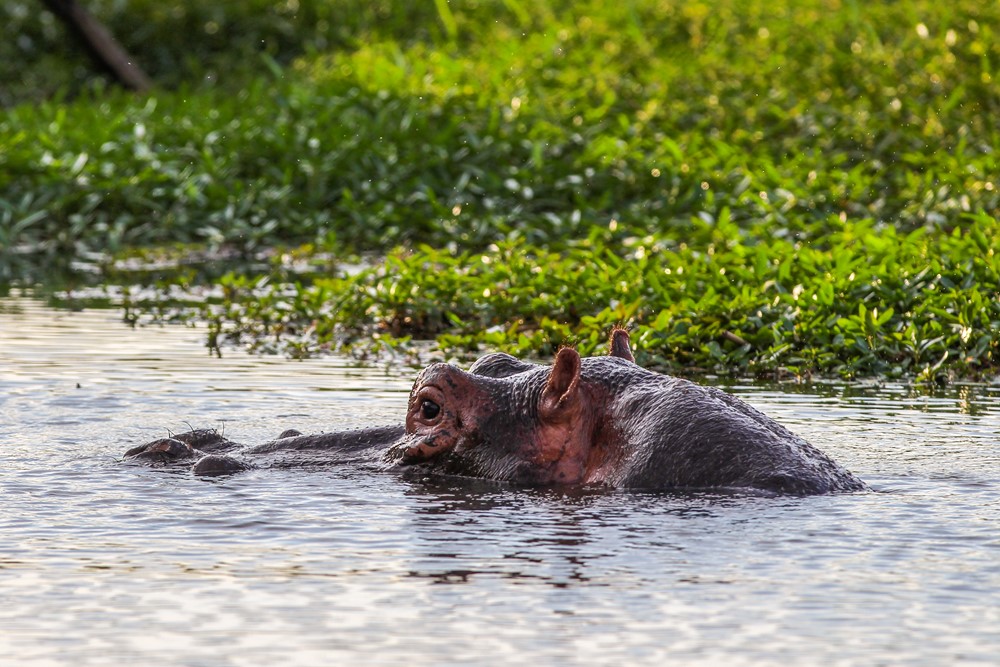THE WHALE'S COUSIN

It is the second largest mammal on land, grey and massive, lives mostly in water, but comes to land between dusk and dawn. It can't swim and barely float, but walks underwater. Even though being fully vegetarian, it is considered the most dangerous animal in Africa, being responsible for most human deaths annually.
Can you guess who it is?
Well, let's start by taking a journey back along the timeline and find out who were the first whales!
The first whales appeared 50 million years ago. It is believed that its ancestor was likely a four-legged, even-toed hoofed land mammal, adapted for running.
The ancestor of today's whales, and also the first cetacean, is assumed to be the so-called Pakicetus, a 1 to 2 metres large animal of which skeletons were found in Pakistan. Pakicetus' however still lived on land, adapted to running rather than swimming and whilst parts of its skeleton clearly show that the Pakicetus was a cetacean, it is therefore not considered aquatic.
Only around 4.5 million years ago whales started to grow to the size we know today. The sudden growth coincides with a sudden cooling and forming of ice caps in the northern hemisphere and thus a change of food supplies: a seasonal releases of ice trapped nutrients to the open ocean resulted in a concentration of plankton in those now nutrient rich waters by the poles, attracting whales to undertake long journeys to get to their food. With these new circumstances, size became a crucial factor for survival as only those animals with greater reserves were able to travel far distances and take advantage of the newly formed feeding grounds. Smaller species would over time disappear as the plankton was no longer widely spread in the oceans and thus no food supplies around for the weaker ones.
But who are the relatives of whales among nowadays living mammals?
Cetaceans have a common ancestor with modern-day artiodactyls such as the cow, pig, camel and giraffe, but it is only the HIPPOPOTAMUS that the whale is still sharing a DNA sequence with - making it the closest living relative of today's whales!
Did you guess right?
The hippo is the second largest mammal on land, grey and massive, lives mostly in water, but comes to land between dusk and dawn. Hippos can't swim and barely float, but walk underwater. Even though being fully vegetarian, they're considered the most dangerous animal in Africa, being responsible for most human deaths annually.
- Sarah

